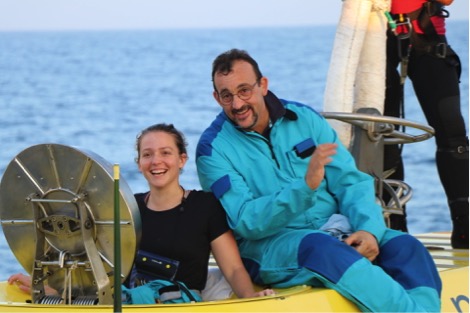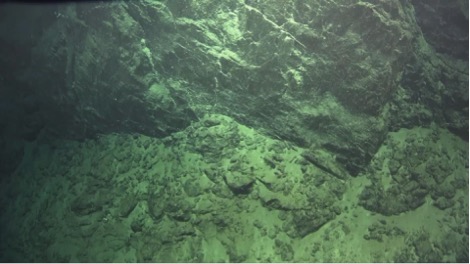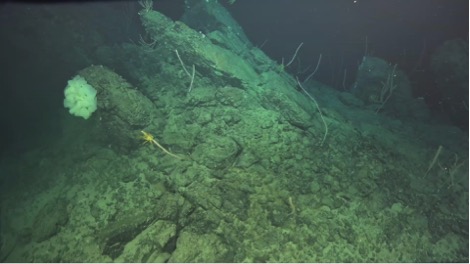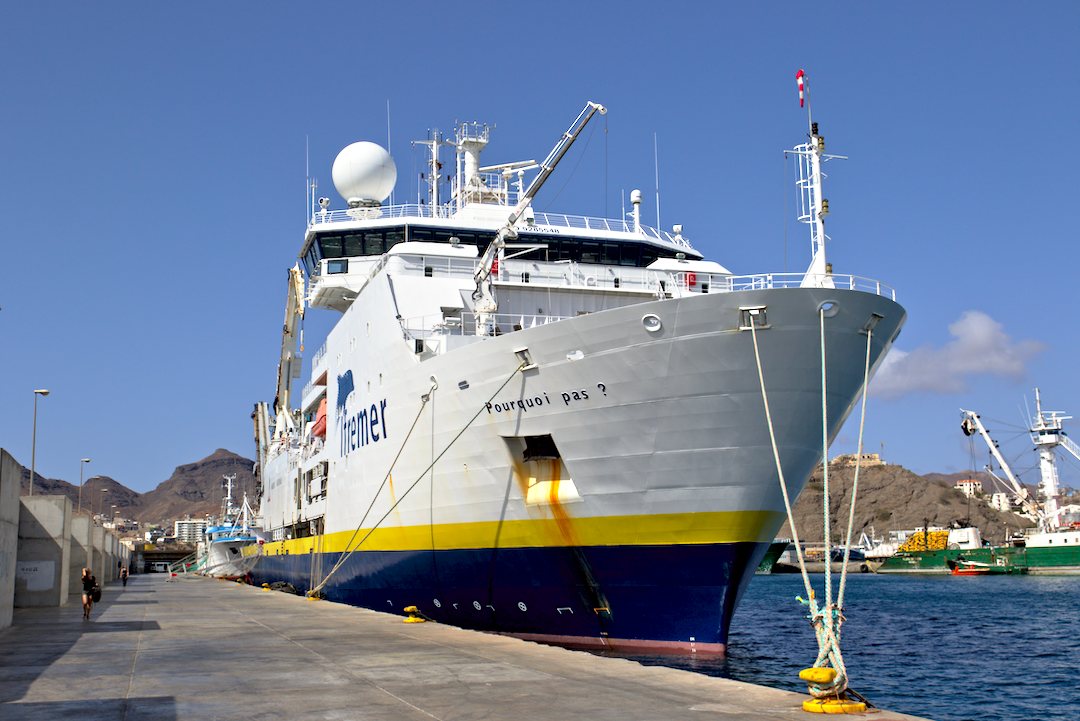This dive is the first one on the main core complex structure. It is located on a steep fault (direction N30), which is crosscutting the interior of the structure. During this dive we managed to collect samples from the bottom to the top of the fault (between 4100m and 3750m).

Departure of Bérengère and Xavier for their dive. © Ifremer
We landed after almost 2h of descent on a steep slope made of sediments and huge to medium-size blocks. Following the slope, we arrived in front of a massive wall that we had to « climb » with the submersible in order to reach the top. All the rocks that we collected were mantle rocks (peridotites) slightly to strongly deformed, and usually altered.
The samples belong to different units, which structure the global slope, from steep blocky and sedimented areas, to vertical and massive units, sometimes more brecciated. We tried as much as possible to sample rocks in place rather than fallen blocks.
Most of these rocks are foliated, and we could clearly see this foliation on outcrops. It is represented as a line corresponding to the intersection between the fault plan and the foliation plan. We were also able to observe series of fractures, generally orthogonal to the apparent foliation.

Contact between the scree anf the cliff wall. © SMARTIES cruise 
The summit of the structure. © SMARTIES cruise
The top forms a very narrow ridge, where some biology likes to settle. It is composed of sediments and rubbles, but also medium to large size oriented blocks, which look like tilted dominos pointing towards N210 (same direction as the foliation and top line) with an angle of 40 to 45°. Heading toward the SW, the top line is faulted parallel to the main fault, so that, it is divided in at least two or maybe more smaller parallel ridges.
After more than 6 hours at the bottom, and 16 samples later, we finally had to go back on board… Happy!
By B. Mougel
